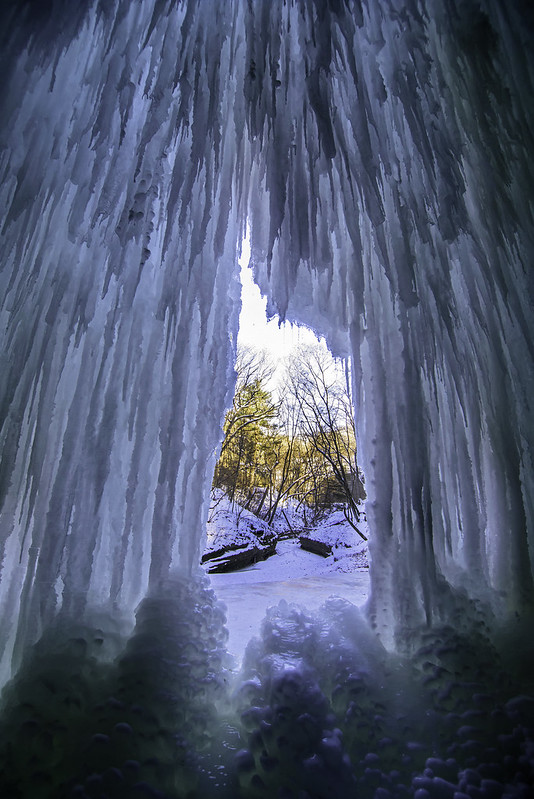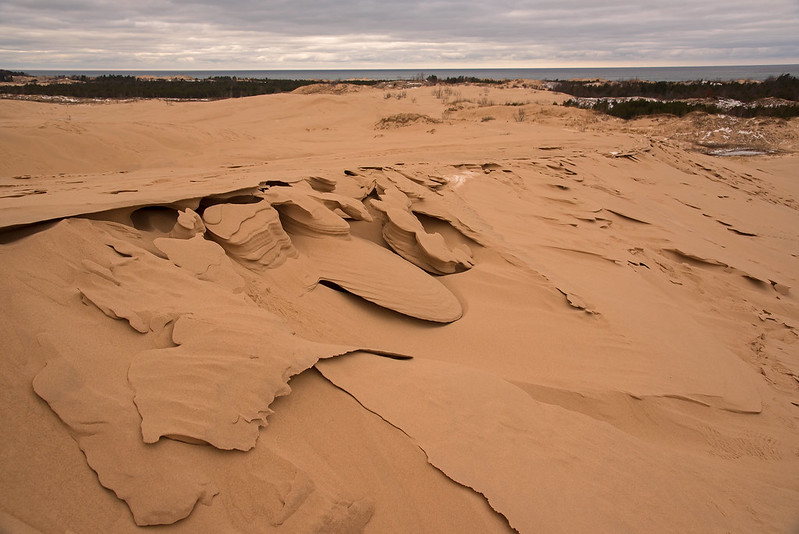
A visit to Mt. Baldy on a warm winter afternoon was on the schedule after a morning of ice fishing on a small lake nearby. Temperatures in the upper 30's made this hike comfortable, if not a bit too hot dressed in winter gear - my coat was open the entire time.
Closed for two or three years, Mt. Baldy opened again last year, with a new path to the beach, avoiding the potentially dangerous parts of the main dune. We noticed the new trail was being taken over by erosion as well. A good part of the approach to the beach was missing, making the hike down to the beach a bit difficult. In winter, the sand freezes, so it does not allow your feet to sink in, and the steep angle requires you to slide down the last 10 feet.

The views from the top of the dune are great, especially with the drift ice floating in Lake Michigan. The Michigan City lighthouse could be seen in the distance, beyond the mounds of shelf ice on the shore. Winds were blowing out toward the lake, so much of the ice drifted out away from shore. As soon as the winds shift back to normal, the ice will pack against the shore once again, creating more and more shelf ice.
Shelf ice is made up of these chunks packed together and piled up by the crashing waves, it's not solid. These variations create an unstable mound of ice that appears strong, but in reality, is quite fragile and inconsistent.

The action of the waves creates mounds much like volcanoes, with holes through the center. These holes are often covered over by a thin layer of snow, creating hidden dangers for those who walk on the ice mounds. These holes, cracks, and other inconsistencies can potentially lead to death should one fall into them.
Visiting the winter shore is quite interesting, but one must remember to remain on solid ground at all times, and resist the urge to climb the shelf ice.




















































